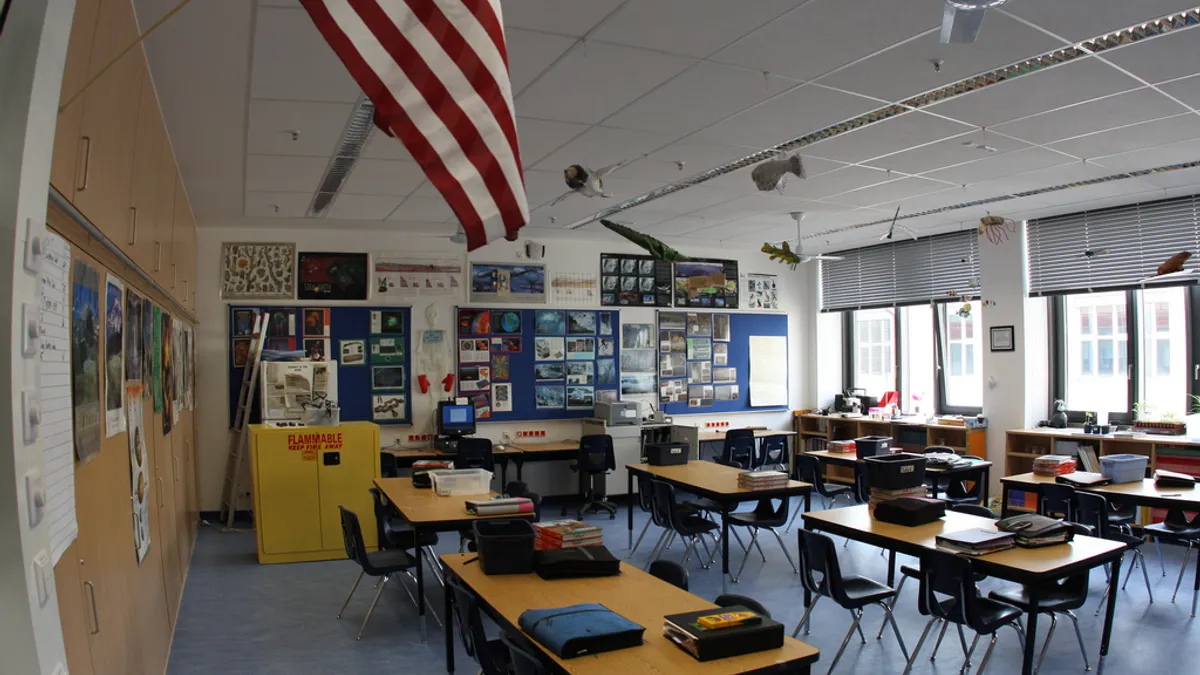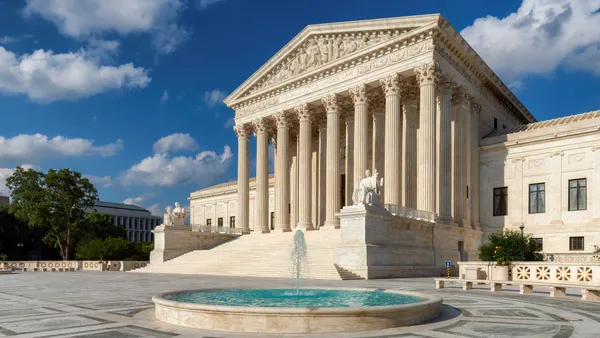Dive brief:
-
State-level educators and national testing experts, speaking during a Council of Chief State School Officers (CCSSO) webinar Monday, agreed schools should conduct large-scale summative assessments this school year but said how the tests are designed and administered is still largely under development.
-
The importance of collecting testing data is vital to understanding gaps and disparities in educational services, especially as some schools remain closed fully or partially to in-person learning due to the coronavirus pandemic, the panelists said.
-
Schools are being advised by state education leaders and assessment professionals to use formative or informal, on-going and flexible testing to help identify students’ academic strengths and needs — and to collect other accountability data points such as attendance — to measure overall student well-being.
Dive Insight:
Serious yet creative discussions about how best to formally measure students’ academic gains are taking place among educators and testing experts nationwide who acknowledge they are concerned about safely and equitably administering high stakes assessments this school year.
The challenges include not only having the capability to proctor valid tests, but also ensuring the results yield meaningful and reliable information about all subgroups of test takers, including students of color, students from low-income families and those with disabilities.
“We want to test our students using our statewide assessment to the greatest extent possible,” said webinar panelist Jillian Balow, Wyoming’s Superintendent of Public Instruction and president of CCSSO’s board of directors. “That’s a little bit fuzzy, but ... we don’t exactly know what kind of school year our students and teachers should expect to have and we’ll adjust accordingly when it comes time to assess.”
A new paper from the Aspen Institute also supports the continuation of assessments in order to identify learning needs and to help guide resources to where they would have the most benefit for learning growth. But this year is very different due to COVID-19 disruptions, and school systems may need to start planning now for different testing contingencies and to rethink how assessments are used in accountability systems, the paper said.
Some of the potential changes to assessments being discussed across the country include having:
- Flexible testing windows.
- Using a sampling of students.
- Developing assessments that are given remotely.
- Separating the assessment and accountability systems.
Though the U.S. Education Department issued waivers to states for Every Student Succeeds Act testing requirements last spring as the pandemic first emerged, states should not expect federal waivers for summative assessments this school year, Education Secretary Betsy DeVos wrote in a Sept. 3 letter to state school chiefs. The secretary, however, added that assessments in the 2020-21 school year may look different, urging state education leaders to rethink approaches in regard to the use of competency and mastery-based assessments.
“We are open to discussions about what, if any, actions may be needed to adjust how the results of assessments are used in your state's school accountability determinations,” DeVos wrote.
Virginia Superintendent of Public Instruction James Lane said his state is focusing on formative testing that can measure student learning on an interim basis. The ongoing assessments can be given during instruction, and teachers can tweak instruction based on the results, Lane said.
“The one thing we want to make sure is that we’re not compounding learning loss,” Lane told CCSSO webinar participants. “We’re going to have the end-of-year assessment … but we’re focusing our efforts on what can we do in the meantime to find diagnostic opportunities to learn more about our students and how we can improve our instruction because of it.”
Scott Marion, executive director of the Center for Assessment, also emphasized to webinar participants the importance of collecting student learning data at multiple levels, including state, local and classroom, and with parent input.
“This is not a one and done,” Marion said. “It’s a way to broaden, potentially, our accountability, our reciprocal accountability systems so that not everything is resting on end-of-year test scores under the control of schools.”








 Dive Awards
Dive Awards






